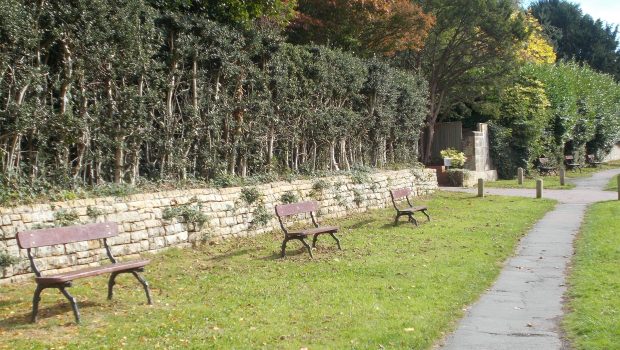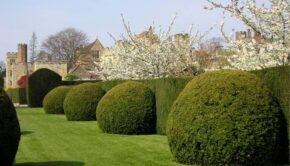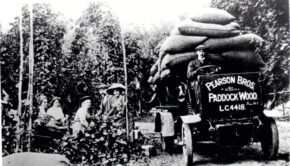TUNBRIDGE WELLS COMMON
CAROLYN GRAY
According to the NHS website: “Walking is one of the easiest ways to get more activity into your day, lose weight and become healthier. Research shows people who fit moderate activity like walking into their daily life burn more energy than those who make weekly visits to the gym.” A trickier one as the bad weather of winter approaches, but there are lots of places in Tunbridge Wells to take advantage of a short walk on a fine day.
Richard Cobb’s book “Still Life – Sketches from a Tunbridge Wells Childhood” takes us back a hundred years, when the majority of people walked everywhere, as he mentions when describing the area, particularly the Common, which to him as a small boy felt like exploring a tropical rain-forest, as well as the ‘mountainous terrain’ of the rocks.
The Common is a very significant part of Tunbridge Wells, and a great place to walk for the recommended 10 minutes a day (or 150 minutes of exercise a week).The other day someone mentioned how hard it was to reach The Common, which lead me to go exploring (and walking). There are several zebra crossings on the north side, along Mt Ephraim, and a useful one across Major Yorks Road. The whole of the east (London Road) side is quite difficult to reach, and there is one zebra crossing from the back of The Pantiles to the end of Castle Road. There are a couple of local guides to walking around the town, and the Tourism Heritage Walking Trail mentions the need to cross the busy roads with care. However, it is not too difficult to quickly be ‘in the country’, and I did notice many empty parking spaces at the top of Castle Road, if you are approaching from outside the town.
The Heritage trail takes you from the restaurant ‘Thackerays’ over London Road to the Common and Belleville. This is the cottage that the author William Makepeace Thackeray stayed in as a child, before leaving, then returning forty years later, when he stayed in Rock Villa, (now ‘Thackerays’). In “Tunbridge Toys” he writes of his childhood memories. Having been born in 1811, Thackeray would have been in the pre-Decimus-Burton town as a boy, so on his return is surprised at the growth, and change in the town, although he comments on how fair the scene over the Common still is (about 1850). What would he make of the cars trundling up and down London Road now?!
The Heritage Walking Trail takes you along Mt Ephraim, including Royal Wells Hotel, built in the period between Thackeray’s two stays. A detour down Molyneux Park Road to 10 Earls Road, home of another author – E M Forster lived here, and attended Tonbridge School. Tunbridge Wells gets a mention in the first chapter of his book ‘A Room with a View’. The official trail takes you back to Mt Ephraim, The Chalet and Mount Ephraim House, but when we took the walk we sneaked up ‘Bogey Lane’ and out on Bishops Down Road by the benches which were known as ‘The South of France’ for their sunny position. The Common by The Spa Hotel that they look out on is quite overgrown. It is mentioned in Richard Cobb’s “Still Life” as a place looking out ‘over a tulgy piece of overgrown ferns and assorted weeds’.
A zebra crossing here to Wellington Rocks, and the main part of The Common. The Heritage Trail takes you back over the lower cricket ground to London Road, but The Common Conservators Walking Trail offers many options, exploring rocks, ponds and trees. Of course, one can also walk over towards Rusthall, Happy Valley, and the many rocks around Toad Rock. Originally forest, the Commons have been open heathland since Saxon times, although since grazing died out a hundred years ago, they have become more overgrown. The original spring would have been in the countryside, and thankfully the Rusthall Manor Act of 1739 protected the Common from further unauthorised building, leaving us a large open space to enjoy these days. Happy walking!
Heritage Trail: www.visittunbridgewells.com Commons Trail: www.twcommons.org






Comments